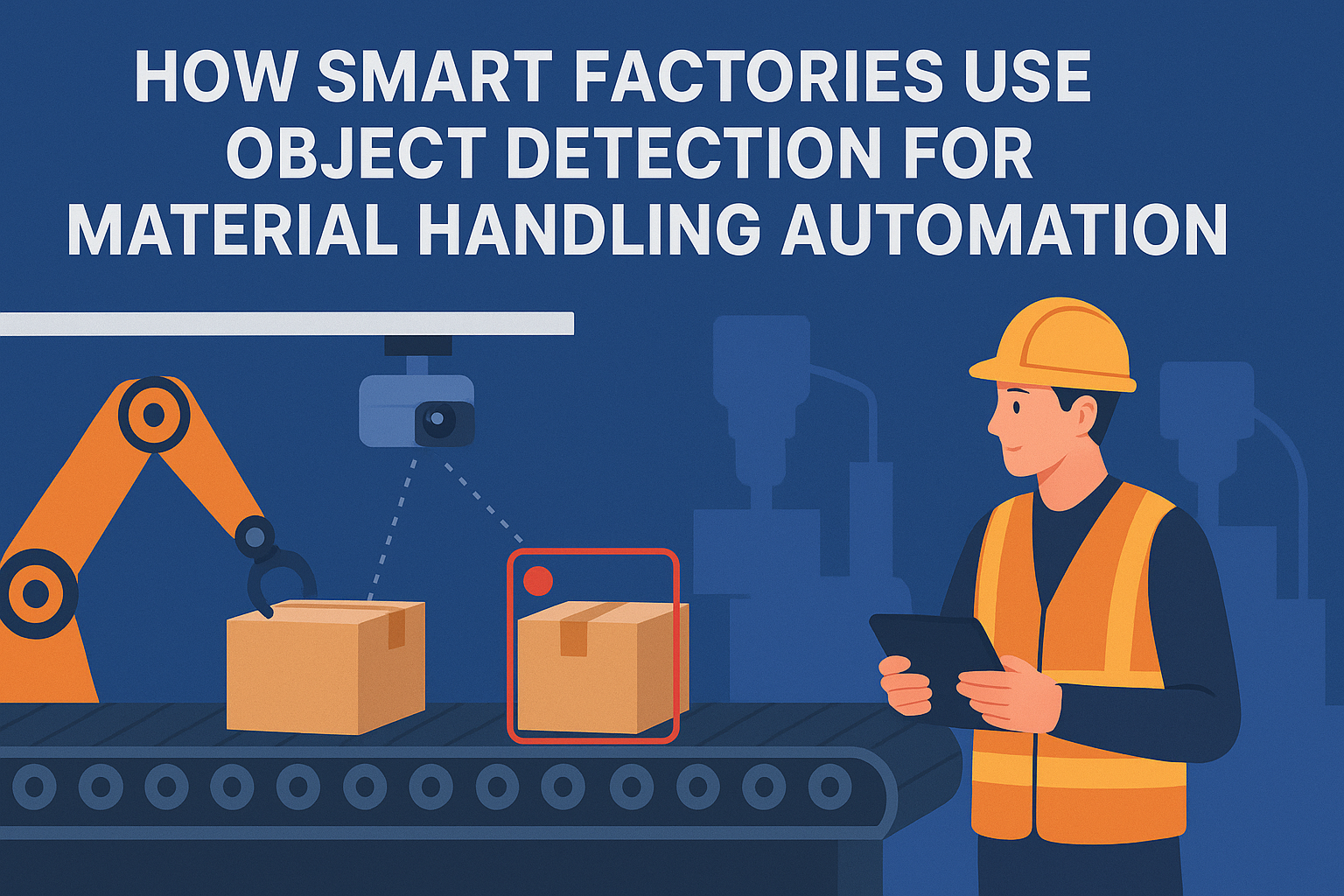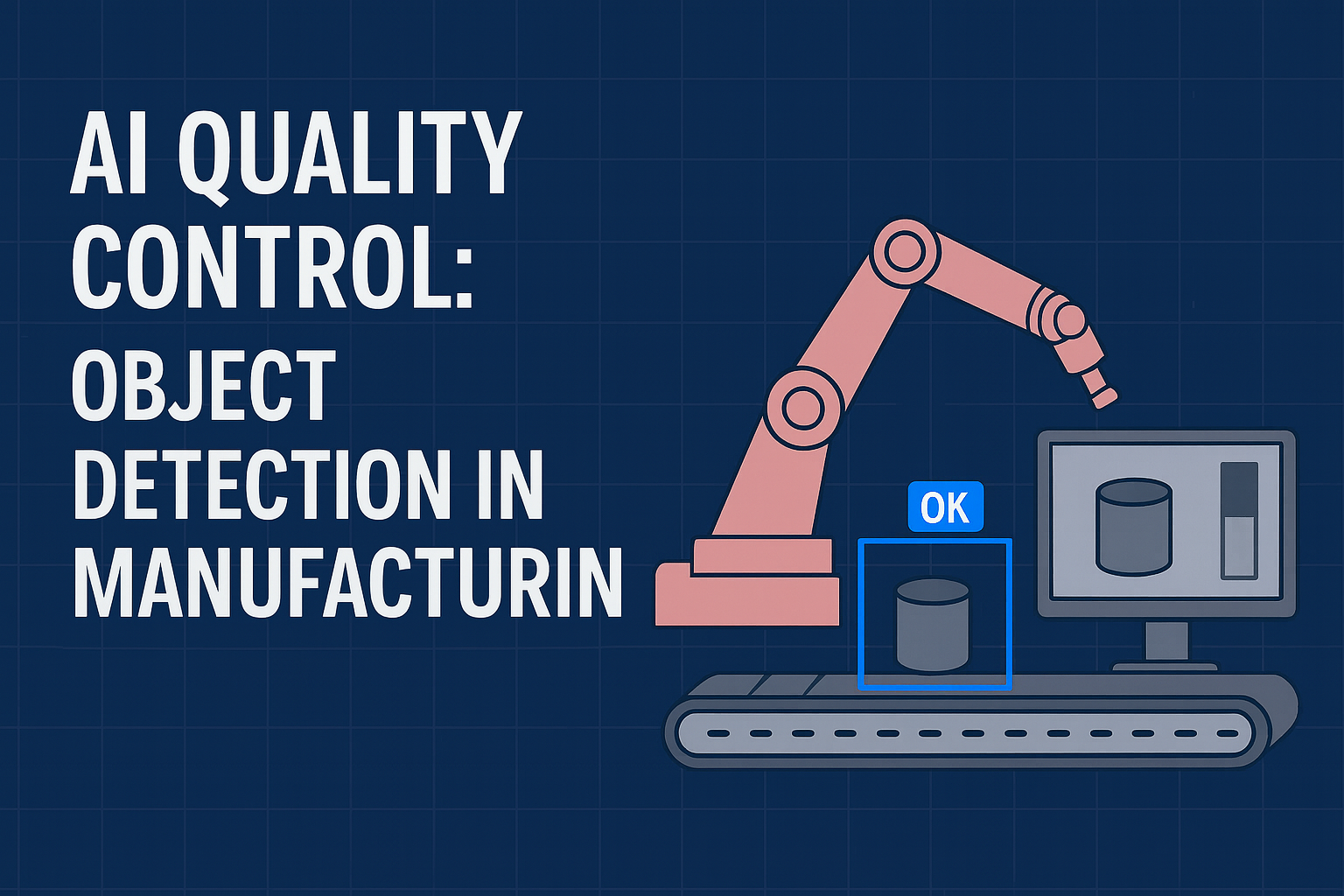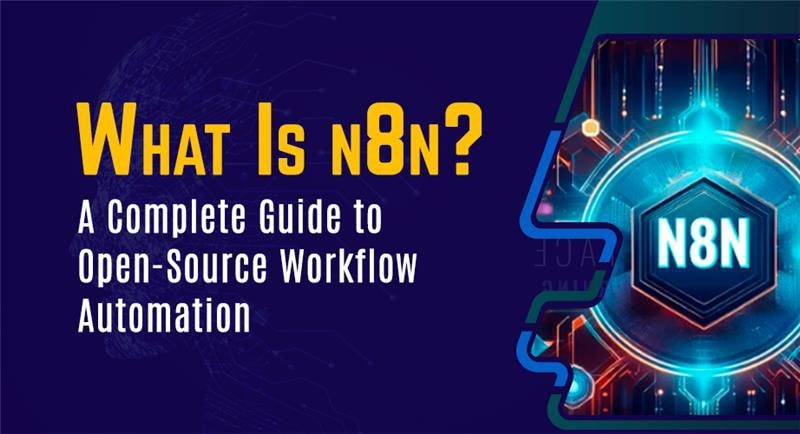In case you ever had the pleasure of setting foot inside of a smart factory, one of the first things you will notice in the digitally transformed facilities is the automated movement of factory materials that is so synchronized it looks like a well-choreographed dance. From automated pallet stacking to conveyor routing to robot and human employee collaboration and automated inventory dispatching, the factory is a symphony of efficiency. Behind this logistical harmony, there is object detection in smart factories.
AI-powered object detection in automated factories refers to advanced computer vision systems that can identify in real time products, pallets, fixtures, labels, and even human hands. The growing reliance on the sophisticated systems is a reflection of the need for manufacturers to remove bottlenecks in material handling, improve throughput, accuracy, and safety. The competitive advantage of the systems rests in the robust and sophisticated sensors which do much more than merely detect presence. The sensors add dimension and context to detection capabilities by ascertaining what the object is, its position and orientation in space, and determining the appropriate actions for any nearby robotic systems like conveyors.
Smart factories utilize object detection systems for advanced automation and material handling in a variety of practical scenarios and AI vision systems have become best practices for modern, dependable, and high production systems. Here’s how it fits into smart factory automation, where it shines, and what it takes to make it reliable on a shop floor that never sits still.
What “object detection” really means on the factory floor
In consumer apps, object detection is a model circling a cat in a photo. In material handling, it’s more like an extra set of eyes for machines that can:
- Find and track items on conveyors, racks, or pallets.
- Read labels, barcodes, and lot codes (OCR + symbology).
- Estimate 3D pose for pick-and-place and palletizing.
- Flag unknown or unsafe objects—think a misplaced tool or a hand near a gripper.
The difference from legacy sensors is context. A photoeye can tell you something is there. Object detection can tell you what it is, where it is in 3D, whether it’s rotated correctly, and what to do next. That context powers the next wave of automated material handling systems: vision-guided robots, AMRs (autonomous mobile robots), and intelligent conveyors that sort, sequence, and verify without babysitting.
Why now? Three reasons: cheaper edge AI hardware, more robust vision models, and better integration with plant systems (PLC, MES, WMS) via standards like OPC UA and MQTT. The tech finally matches the messiness of real factories.
How it works in practice: the vision stack
Think of an object detection system as a stack. Each layer has to be right for the whole thing to be stable.
Sensors and optics
- 2D RGB cameras: Fast, inexpensive, great for label reading, presence/absence, and SKU recognition when geometry is consistent.
- Depth/3D (stereo, time-of-flight, structured light): Essential for bin picking, depalletizing, and anything that needs a grasp point.
- LIDAR and laser profilers: Useful for contour detection and height maps on moving conveyors.
- Lighting and optics: The unglamorous MVP. Controlled illumination, polarizers to kill glare, and the right lens (telecentric for dimensional accuracy, wide-angle for coverage) will solve more problems than fancier models.
Models and perception
- Detection: Bounding boxes around items (e.g., YOLO family, DETR variants). Great for fast classification and tracking.
- Segmentation: Pixel-accurate masks (Mask R-CNN, SAM-based pipelines) for cluttered scenes and precise grasping.
- Pose estimation: 6-DoF pose for pick orientation; often fused with depth.
- OCR/symbology: Barcodes, QR, and lot code reading for traceability.
Production systems often fuse two or three: detect → segment → estimate pose → read label → verify.
Edge inference and latency
Material handling runs on cycle time. That means decisions within tens of milliseconds:
- Edge AI devices (industrial PCs, embedded GPUs/NPUs) handle inference near the line to avoid network latency.
- Deterministic control: Results are sent to PLCs or robot controllers with time-stamped triggers so picks happen at the right place on a moving belt.
- Redundancy: If vision drops frames, the system should default safe—divert, slow down, or stop.
From perception to motion
Seeing is step one. Acting is step two:
- Vision-guided robotics: The system translates detections into grasp points, checks reachability, and picks. Force/torque sensors help confirm a secure grasp.
- AMRs and conveyors: Object detection validates tote IDs, detects overhang, confirms pallet integrity, and triggers routing decisions.
Where object detection delivers fast payback
Bin picking and kitting
Randomly oriented parts in a bin are tough for traditional automation. Add 3D perception and robust detection, and a cobot can pick, verify, and place into kits with far fewer mispicks. Telltales of a good candidate:
- Limited SKU shapes per bin
- Graspable surfaces and defined no-touch zones
- Takt time ≥ 3–4 seconds per pick, or parallelization options
Palletizing and depalletizing
Vision guides robots to align cases, confirm labels face out, and spot crushed or overwrapped boxes. On the inbound side, detection can identify mixed-SKU pallets, read labels, and direct layer-by-layer deconstructing safely.
Receiving and putaway with AMRs
At receiving, cameras read labels, detect damaged packaging, and verify quantities. AMRs use on-board vision to confirm the right tote in the right bay, catch obstructions, and manage handoffs with conveyors or lifts.
End-of-line inspection and exception handling
Object detection ensures the correct cap, label orientation, and presence of safety seals. Instead of rejecting everything when a pattern deviates, it flags exceptions with photos so operators can make fast decisions and keep the line moving.
An implementation playbook that actually holds up
You don’t need a moonshot to start. You need a good first mile.
1. Choose a narrowly defined use case
- One product family or one station (e.g., end-of-line case verification).
- Clear success metrics: pick rate, mispicks per 1,000, cycle time hit, first-pass yield.
2. Control the scene before you tune the model
- Stabilize backgrounds (neutral mats, non-reflective).
- Add consistent lighting (diffuse, flicker-free; avoid mixing color temperatures).
- Standardize labels and orientations where possible: a small packaging tweak can save months of modeling.
3. Collect data like it matters (because it does)
- Capture the long tail: damaged, dusty, rotated, partially occluded, seasonal packaging, and vendor variations.
- Label carefully: bounding boxes and masks with consistent rules.
- Use synthetic data and domain randomization to cover angles, lighting, and clutter you don’t see often but will see at 2 a.m.
4. Pick models for the job, not for a paper
- Start with strong baselines (modern YOLO/DETR for detection, SAM + pose for intricate picks).
- Optimize for edge: quantization, pruning, and batching tuned to your latency budget.
- Track more than accuracy: stability across shifts, lighting, and SKUs matters more than a half-point of mAP.
5. Integrate with controls and systems early
- PLC handshakes, robot command timing, and conveyor encoder sync are non-negotiable.
- Use standard interfaces (OPC UA, MQTT, PackML states).
- Decide the authority of vision: can it stop the line, or only divert? Who breaks ties—WMS, PLC, or vision?
6. Plan for operations, not just deployment
- Dashboards that show confidence scores, last-seen images, and reasons for rejects build operator trust.
- Implement graceful degradation: if OCR fails, fall back to barcode; if detection confidence is low, route to manual inspection.
- Monitor model drift and schedule periodic re-training. Version your datasets.
7. Bring people along
- Train operators on what the system sees and why it makes decisions.
- Provide a fast feedback loop to tag false positives/negatives.
- Celebrate the safety and ergonomics wins, not just throughput.
Details that make or break performance
- Lighting and optics: 80% of “AI problems” are lighting problems. Use diffusers, polarizers, and fixed mounts. Avoid specular hotspots that look like labels to a model.
- Calibration: Hand–eye calibration for robots, conveyor-to-camera timing, and depth alignment need regular checks. Put it on the PM schedule.
- Latency budgets: Start to finish (exposure → inference → controls) must fit the takt time margin. Leave headroom for network jitter.
- SKU variability: Implement open-set recognition so the system can say “unknown” rather than guess. It’s safer and saves rework.
- Safety: Follow standards (ISO 10218, ISO/TS 15066 for cobots, ANSI/RIA R15.06). Use speed and separation monitoring, light curtains, and well-defined safety PLC logic. Vision can assist safety but should not replace certified safety devices.
- Cybersecurity: Segment networks (VLANs), sign model updates, and log inference results. Treat cameras and edge PCs as OT assets with patching windows.
Material Handling Automation ROI
Vision-guided automation ROI calculator:
- Throughput and cycle time: Picks per hour, conveyor speed, buffer starvation events.
- Quality: Mispicks per 1,000, false rejects, rework hours.
- Safety and ergonomics: Recordable incidents, near-misses, and high-strain tasks automated.
- Uptime: MTBF of vision hardware, recovery time after faults, model drift alarms.
- Inventory accuracy and traceability: Scan/read rates, lot association completeness.
A simple back-of-the-envelope: If an end-of-line verification system reduces mislabels from 0.8% to 0.2% on a 2-shift operation shipping 20,000 units/week, and each error costs $40 in rework and admin, that’s roughly $4,800/month saved—before counting throughput gains or fewer customer chargebacks. Many projects pencil out in 6–18 months when scoped well.
Build vs. buy: how to choose your path
- Off-the-shelf (vision appliances, pre-trained models): Faster time-to-value for common tasks like label verification, case counting, and presence/absence.
- Customized systems: Necessary for complex bin picking, mixed-pallet depalletizing, or harsh environments. Budget time for data and integration.
- What to ask vendors:
- How do you handle SKU changes and model updates?
- Can I see performance across lighting shifts?
- What’s the worst-case latency?
- How do you integrate with my PLC/MES/WMS?
- What’s the support model—SLA, remote diagnostics, spare parts?
What’s next: trends worth watching
- Foundation models for vision: Better zero-shot recognition and fewer labeled images to start.
- 3D-first perception: Commodity depth sensors and smarter fusion make pose estimation more robust in clutter.
- Sim-to-real: Using high-fidelity digital twins and synthetic data to train edge models before a single photo is taken.
- Multimodal systems: Combining vision with force sensing, audio, and contextual data (work orders, WMS signals) for more reliable decisions.
- On-device AI: NPUs embedded in cameras and robots reduce latency and network load.
FAQ’s
Q. What is object detection in smart factories?
Object detection is simply a tool that helps machines recognize what’s around them. Think of it like giving a factory robot a pair of eyes. It can notice boxes, parts, or any materials moving on the line and understand what they are in real time. This makes it easier for smart factories to automate everyday jobs like sorting, picking, or moving items without constant human supervision—and with far fewer mistakes.
Q. How does object detection improve material handling?
With object detection in place, the line just flows better. The system can spot what’s coming down the conveyor and guide the machines to handle it without waiting on someone to double-check. You get quicker picks, fewer slowdowns, and a cleaner, safer workflow overall — basically, everything moves the way it should without constant manual correcting.
Q. Can object detection reduce labor costs in manufacturing?
Yes—big time. When tasks like sorting, scanning, and tracking are automated, factories don’t have to depend as much on repetitive manual work. It frees up workers to focus on more important tasks, while also cutting down on labor and day-to-day operational costs.
Q. What industries benefit the most from AI-driven material handling?
Industries like automotive, electronics, FMCG, logistics, and pharma benefit the most. These sectors handle huge volumes of materials every day, where accuracy and speed really matter. That’s why object detection fits so well—it helps keep everything moving smoothly and makes tracking and handling materials a lot more reliable.
Q. Is object detection difficult to integrate with existing factory systems?
Not anymore. Modern AI models and vision systems are designed to integrate smoothly with current conveyor belts, robotics, and warehouse management systems.
Q. What is the ROI of using object detection for material handling automation?
Factories typically see ROI through increased production speed, reduced errors, fewer damaged goods, and lower labor costs. Many companies report measurable improvements within months because automation minimizes inefficiencies and gives real-time visibility into material flow.
Q. What challenges do manufacturers face when adopting object detection?
In smart factories, manufacturers adopting object detection face practical hurdles: inconsistent lighting and optics, data quality gaps, SKU churn, 2D vs 3D sensor fit, edge latency, and complex PLC/robot/WMS integration. Model drift, cybersecurity, and safety compliance add pressure. Mitigate with controlled lighting, robust datasets, open-set recognition, edge inference, deterministic handshakes, and routine calibration. Start with a scoped pilot, measure ROI, and scale once stable to automate material handling reliably.
Conclusion
Object detection won’t fix every problem on the floor, but in smart factories it’s one of the most reliable ways to automate material handling, boost accuracy, and raise safety without re-architecting your line. The teams that see real ROI don’t chase flashy demos—they nail the fundamentals: engineered lighting, clean and representative datasets, deterministic PLC/robot handshakes, and edge AI tuned to takt time.
Start small and prove it: one cell, one product family, clear targets for read rates, pick success, and latency. Instrument everything, iterate steadily, and expand once stable. Done right, computer vision, vision-guided robotics, and AMRs become quiet force multipliers across receiving, kitting, palletizing, and end-of-line inspection—with fewer mispicks, faster changeovers, and safer aisles.
Curious what this looks like in plants like yours? Visit ML.Techasoft.com, the best ai ml development company to explore case studies, request a demo, and see how AI-powered object detection can lift throughput, improve quality, and enhance safety—without disrupting your existing operations.
Read this also: AI Quality Control: Object Detection in Manufacturing








Leave a reply